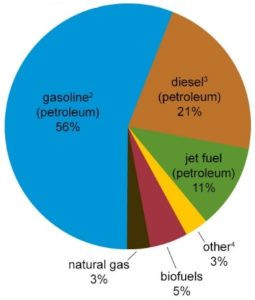 If you were to study the U.S. Energy Information Administration’s chart on transportation sources/fuels used during 2015, it could end up being depressing – unless you’re set up to do well investing in petroleum. If jet fuels were removed from the chart, the share of gasoline and diesel would increase and dominate the pie chart even more; the other categories would increase, too. Biofuels and natural gas lead the way in alternative fuels, while electricity and propane autogas are lumped together in the “other” category, along with a few other types. If you were to look at what’s fueling electric power plants, renewable energy is in a similar situation compared to fossil fuels; though it has gotten better.
If you were to study the U.S. Energy Information Administration’s chart on transportation sources/fuels used during 2015, it could end up being depressing – unless you’re set up to do well investing in petroleum. If jet fuels were removed from the chart, the share of gasoline and diesel would increase and dominate the pie chart even more; the other categories would increase, too. Biofuels and natural gas lead the way in alternative fuels, while electricity and propane autogas are lumped together in the “other” category, along with a few other types. If you were to look at what’s fueling electric power plants, renewable energy is in a similar situation compared to fossil fuels; though it has gotten better.
The market is also showing real signs of getting better for clean fuels and energy over the next decade or more. Several new electric, fuel cell, and alternative fuel-modified vehicle models will be launched and produced in higher volumes; the charging and fueling infrastructure will continue to grow; and breakthroughs in advanced fuels, renewables, and technologies are beginning to see positive signs of reaching commercial-grade production.
Trump and economics: The Trump administration is clearly unsupportive of decarbonization, renewables, and other clean fuels. But the market forces appear to be large enough to more than compensate for the impact of a fossil-fuel friendly administration, and whichever man or woman follows Trump to the White House in the next decade.
“Based on the signals it has sent so far, the administration seems to have little incentive or appetite for getting in the way,” Matt Tomich, who was appointed Energy Vision’s president last year, wrote in a recent GreeBiz.com column.
That level of investment is substantial; while Silicon Valley and other venture capital groups pulled away from renewables and electrification starting in 2008 (and over to mobile apps and devices), some of them are coming back. That can be in alliance with a few government entities as well. China invested $100 billion in renewables last year, according to Tomich. Clean energy is surging toward becoming a multi-trillion-dollar market; and the U.S. is seeing renewables generate more energy than any other country except China. Along with clean energy, Energy Vision is projecting that several promising renewable energy markets are emerging, including renewable natural gas. It burns as cleanly as geologic natural gas and can use the same pipelines for delivery. It’s made from biogas emitted by decomposing organic materials such as farm waste, food waste and municipal wastewater, which are renewable, ubiquitous resources, Tomich said.
RNG and RD: Renewable natural gas and renewable diesel are seeing incentives increase, and demand for the fuel growing from fleets. California’s low carbon fuel standard includes them as qualifying fuels, which helps infrastructure suppliers make that investment. In October, the city of San Diego joined a growing list of cities in California adopting renewable diesel. As part of the city’s goal of cutting its greenhouse-gas emissions in half by 2035, it will soon fuel its entire municipal vehicle fleet with renewable diesel, making it the largest in the nation to embrace the clean fuel.
Renewable energy: Scientific American recently reported that renewable-energy sources such as solar and wind are expected to account for 8% of U.S. electricity-generation capacity in 2017, according to the U.S. Department of Energy. Solar growth is behind much of it. For the first time ever, new solar-generating capacity is expected to exceed new generating capacity for wind and natural gas, according to the report.
DME: Oberon Fuels said that it has its first customer demonstration of a Dimethyl Ether (DME)-powered Mack truck, a Mack Pinnacle. Oberon, a DME producer, and Mack are working with the NYC Department of Sanitation (DSNY) to operate the demonstration vehicle at the Fresh Kills Landfill, and evaluate performance and overall drivability. The test is the first step in the city’s evaluation of both DME trucks and DME fuel as a potential long-term strategy to help reduce greenhouse gas emissions by 80% by 2050; and to achieve the city’s goal of sending zero waste to landfill by 2030. DME has quite a few supporters, as it has the performance qualities and energy efficiency of diesel but can lower CO2 emissions by 95%
Advanced batteries: Lithium-ion batteries are starting to see improvements being deployed in new electric vehicles for better energy storage capacity, with more technology innovations just around the corner. Along with lithium-iron phosphate batteries, researchers are fascinated with the potential of nanotechnology. In Europe and the U.S., innovative nano-material based supercapacitors are set to bring mass market appeal for PEVs much more possible; with graphene being well received as a potential nano-material. The amount of energy in which supercapacitors are able to store is generally about 10% that of electrochemical batteries. The ElectroGraph project is being supported by the European Union and a consortium of 10 partners from research institutes and industries. One of their main objectives is to develop new types of supercapacitors with significantly improved energy storage capacities.
Wireless charging: Some analysts see wireless electric vehicle charging being as, or more, important than fast charging in supporting adoption of plug-in electrified vehicles (PEVs). Some automakers are showing interest, but mass adoption is still years away. Mercedes-Benz will be the first on the market, offering wireless charging on its S550e plug-in hybrid this year. Wireless uses inductive charging with two coils of wire in two objects, such as a pad on the electric car connected to its battery and a separate pad on the ground. When the pads are close enough, an electromagnetic field transmits current and charges the battery. Suppliers, including Qualcomm, Momentum Dynamics, and Evatran Group, are in talks with automakers about integrating this technology into their product planning.
Advanced biofuels: Signs are in place that producers are adopting advanced fuels over traditional corn-based ethanol that makes up about 10% of gasoline sold in the U.S. Cellulosic ethanol has major corporate backing from DuPont, POET, and Abengoa. Synthetic Genomics and ExxonMobil recently extended their agreement to conduct joint research into advanced algae biofuels after making significant progress in understanding algae genetics, growth characteristics, and increasing oil production. Gevo, Inc., just announced that the U.S. Environmental Protection Agency has approved the pathway for isobutanol produced at Gevo’s Luverne, Minn., plant to be an advanced biofuel under the Renewable Fuel Standard program. The company also announced that a 12.5% blend of its bio-isobutanol with gasoline marketed for use in automobiles has begun to be sold in the Houston area.
PEV sales volume: More than 700,000 PEVs were sold in China, Europe, and the U.S. last year, with China in first place and about double the size of U.S. sales, then came the U.S., Norway, U.K., France, Germany, Netherlands, Japan, Sweden, and Canada. Sales numbers have been shooting up in the past 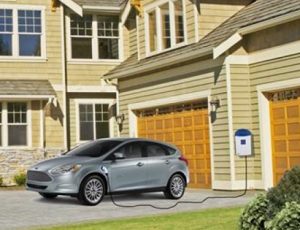 two years, with incentives and a wide variety of PEVs available, driving growth in China. The U.S. and Europe are also seeing impressive gains. If this trend continues over the next 15 years, PEVs will make a decent share of global new vehicle sales, well beyond the current level of about 1% of global sales.
two years, with incentives and a wide variety of PEVs available, driving growth in China. The U.S. and Europe are also seeing impressive gains. If this trend continues over the next 15 years, PEVs will make a decent share of global new vehicle sales, well beyond the current level of about 1% of global sales.
Long-range: The Chevy Bolt and Tesla Model 3 were thought to be bringing the future of longer-range rides in a PEV to the market. That’s already starting to be seen with the Chevy Bolt getting a 238 miles per charge rating by the EPA. The new Renault Zoe all-electric small car was launched last year with 250 miles per charge based on Europe’s NEDC standards, which would be less in the U.S. under EPA standards. While it will take until the end of this year for the 200-mile plus Model 3 to roll out, Tesla just broke through another barrier – the 300 miles per charge level. Tesla just launched a Model S 100D with 335 miles of range per charge and a starting price of $95,800 (plus destination) before incentives. It’s powered by a 100 kWh battery, and is awaiting an official EPA rating on its range following the agency’s preliminary estimate. The electric automaker also launched the Model X 100D with a 100 kWh battery and 295 miles of range, based on the preliminary EPA estimate. Volkswagen, BMW, Daimler, GM, Ford, Toyota, Nissan, and Honda have each committed to launching an impressive lineup of PEVs through 2025. Startups like NextEV, Lucid Motors, Faraday Future, and Fisker, Inc., are preparing for their first wave of launches taking on Tesla in the high-performance end with bragging rights for the fastest, longest-range all-electric supercars on the market.
Charging by speed and energy source: As of one year ago, Tesla had 253 Superchargers installed in the U.S., there were 1,530 CHadeMO chargers, and 387 CCS/Combo fast chargers in place, according to Fleet Carma. That number has gone up in the past year and makes up over 10% of what the Department Energy says makes for a total of 15,315 charging stations in the U.S.; with Level 2 chargers also being a significant growth area in recent years. Utilizing renewable energy sources to charge PEVs still has a long way to go, but the current numbers became more impressive over the past year. California makes up about 50% of PEV sales in the U.S. Last year, about 27% of its electricity retail sales were powered by renewables including solar, wind, geothermal, biomass, and small hydroelectric. The state’s aggressive Renewables Portfolio Standard is aiming to reach 33% by 2020 and 50% by 2030; which looks possible to accomplish. Another factor to consider is that a lot of PEV owners charge their vehicles through their own clean power source, usually solar panels on their houses.
New hydrogen fuel cell alliance: Fuel cell electric vehicles are way behind PEVs and other alternative fuels in vehicles sold in the U.S., Europe, and Japan. Automakers are still dedicated to the fuel and technology, though, as spelled out recently in a KPMG study. That became more evident last week when Toyota, BMW, Daimler, Honda, and Hyundai, announced that they’re joining up with several other companies to invest a combined $10.7 billion in hydrogen-related products within five years. Thirteen automakers, and energy and industrial companies, are forming a hydrogen council to support hydrogen fueling and FCEVs; and to provide another channel beyond battery power to hit the zero emission vehicle mark.
“The world of energy is transforming very, very fast,” said Shell CEO Ben Van Beurden at the World Economic Forum in Davos, Switzerland; Shell is one of the alliance’s partners. “Hydrogen has massive potential.”
Other OEM alliances: Other FCEV alliances were created in recent years with General Motors and Honda exchanging patents. Toyota and BMW created an alliance to share technology and funding. Another consortium had been set up with Nissan, Ford, and Daimler. It’s been a slow process, with Nissan announcing its first fuel cell cars many not come out until 2020 or the next year. A fuel-cell version of Daimler’s Mercedes GLC may be launched this year; however, it isn’t clear whether its technology is a result of the partnership with Nissan and Ford.
Hydrogen stations: Nikola Motor Co., which operates hydrogen fuel cell semi-trucks, will be rolling out a nationwide network of hydrogen fueling stations that will be accessible to other fuel cell vehicles, the company recently announced. That would increase the U.S.’s present status of 33 hydrogen stations more than 10-fold to 364 more stations built by Nikola. This infrastructure network will begin construction in a year, in January 2018, and will begin opening in late 2019, according to CEO Trevor Milton. Toyota, Honda, Hyundai, Mercedes, and other automakers developing fuel cell cars, will be very interested in seeing this happen.
Propane autogas: According to a study prepared for the U.S. Department of Energy, propane vehicle sales are expected to increase from 12,900 in 2014 to about 34,750 per year by 2020, and then to about 52,500 vehicles per year by 2025. Market segments include fleets using light-duty and medium-duty work trucks. While the introduction of new vehicles and engines has been slower than anticipated, and greater market penetration will be delayed somewhat by the decline in the propane fuel cost advantage caused by lower oil prices, the availability of new emissions-certified engines and the growing acceptance of propane vehicles by commercial vehicle fleet operators, irrigators, and commercial landscapers will lead to continuing growth in these markets.
Roush CleanTech has found converting and selling propane-powered school buses to be taking off in the market, along with its propane vans and heavy-duty pickups. It took the company six years to sell over 14,000 propane vehicles, but the company is on track to sell 6,000 more vehicles converted to run on propane autogas by the end of 2017. The company says that it’s been able to make the business case that propane makes for a better, more cost effective alternative fuel than compressed natural gas.
Natural gas: Earlier this month, NGVAmerica commended the release of a new study by scientists from West Virginia University’s Center for Alternative Fuels, Engines and Emissions. The study published online by Environmental Science & Technology was supported by the Environmental Defense Fund and numerous organizations from the natural gas industry, including a variety of NGVAmerica 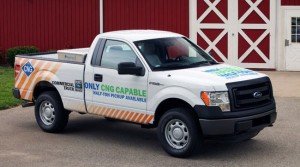 members. The industry is seeing significant advancements where technologies are being deployed in the latest generation of natural gas engines and fueling infrastructure. These are dramatically lowering emissions, providing North American fleets with the ‘greenest’ choice, said NGVAmerica President Matthew Godlewski.
members. The industry is seeing significant advancements where technologies are being deployed in the latest generation of natural gas engines and fueling infrastructure. These are dramatically lowering emissions, providing North American fleets with the ‘greenest’ choice, said NGVAmerica President Matthew Godlewski.
The industry group also commented on the fact that the WVU study did not examine the increasing role renewable natural gas that can reduce total GHG emissions by more than 80%. NGVAmerica estimates that 20% to 30% of all natural gas used for transportation is now RNG.
Refuse giant and NGVs: Waste Management this month released its annual sustainability report, which announced that the company recycled and composted more than 14 million tons of materials from the waste stream in 2015; and as a company, Waste Management is a net greenhouse gas reducer. Its fleet uses more 5,100 natural gas vehicles, which the company says is the largest fleet of its kind in North America. The company reported using technology at landfill-gas-to-energy facilities to power the equivalent of 470,000 households, offsetting 2.5 million tons of coal per year and 2.5 million tons of carbon dioxide emissions per year. You can view the report here.
Biofuels: As previously mentioned, advanced fuels are pivotal to the future of biofuels. The EPA last week denied a request from oil refiners to waive some of their advanced biofuels use requirements from 2016 in the Renewable Fuel Standard. The agency in a letter to the American Fuel and Petrochemical Manufacturers said it was denying the group’s request to waive some of the volumes that previously the agency said would be required for use in 2016, citing short supplies. EPA had set up a waiver credit system to help oil companies meet annual targets set by Congress for required use of cellulosic ethanol. Development of the advanced biofuel industry has been slower than lawmakers expected when they established annual targets in 2007.
Biodiesel: Biodiesel so far has been the leading advanced biofuel qualifying for Renewable Identification Credits under the Renewable Fuel Standard. It has an advocate in the industry – General Motors – which has not backed away from selling diesel vehicles after the emissions scandal and so far hasn’t been pulled into it. Biodiesel adds another appealing element to the fuel for the automaker and its fleet clients.
GM and biodiesel: During the National Biodiesel Conference this month, John Schwegman, director of commercial product and medium duty for GM Fleet, announced GM will add to its lineup of B20-capable vehicles, making for the auto industry’s most expansive lineup of diesel-powered vehicles this year. That biodiesel-capable vehicle lineup includes Chevrolet Express full-size vans; Silverado HD full-size pickups; the Colorado midsize pickup; Low Cab Forward commercial truck; 2017 Cruze compact car; and the 2018 Equinox compact crossover SUV. Schwegman said that GM is “very optimistic on the diesel market.” The company has more than two million diesel vehicles on the road today in the U.S. and is making all its existing and future diesel vehicles B20 compliant.
New EPA head on RFS: Oklahoma Attorney General Scott Pruitt, who will soon be EPA administrator if approved, is expected to crack down on federal fuel economy and emissions standards; unless the process is too long and dragged out to reverse EPA’s January decision, and if there are clean energy mandates made by the Obama administration that are more important to the Trump administration to overturn. As for the Renewable Fuel Standard, lawmakers from Midwestern states asked about his views on biofuels during the Senate confirmation hearing. Pruitt said he would support the U.S. renewable fuels standard, which requires biofuels like ethanol to be blended in gasoline, but said the program needed some tweaks.
He has taken measures against the RFS. As attorney general of Oklahoma, Pruitt in 2013 filed a friend of the court brief with the U.S. Supreme Court in which he argued the EPA ignored the risks that gasoline with more than 10 percent ethanol can pose to vehicle fuel systems as well as the RFS requirement’s possible effect on food prices. He has been prone to support fossil fuel companies. In Oklahoma, he’d received more than $318,000 from fossil fuel companies for his election campaigns. Ethanol advocates have said they’re going to work on being heard by Pruitt. Sen. Chuck Grassley (R-Iowa) would like to speak with him about it. “I look forward to working with the president-elect and his nominees to continue the success of domestic biofuels,” Grassley said.
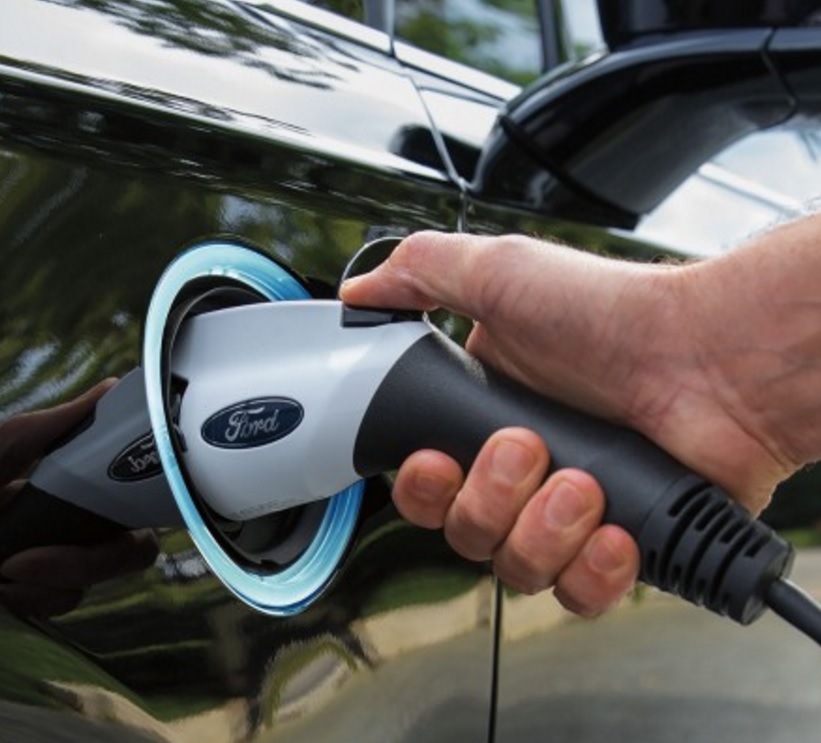 Ford joining China EV market: Ford Motor Co. is now in agreement with Daimler, Tesla, and General Motors on the importance of China in the global electric vehicle market. Ford is launching the Mondeo Energi plug-in hybrid in China early next year and an all-electric small SUV in that market within five years. The EV will go more than 280 miles on a charge, and will also be sold in the U.S. and Europe. The automaker said that 70 percent of all Ford nameplates will have an electrified option in China by 2025; that will include hybrids, plug-in hybrids, and battery electric vehicles. That lineup will include all vehicles manufactured jointly through Changan Ford JV, which is a collaboration with Changan Automobile. EV sales are expected to stay strong in China, whether or not the government cuts back on its generous subsidies. “The time is right for Ford to expand our EV lineup and investments in China,” said Ford CEO Mark Fields. “We are prioritizing our electrification efforts on China to reflect its importance as a global electrified vehicle market and to make lives better, simpler and more cost effective for Chinese consumers.”
Ford joining China EV market: Ford Motor Co. is now in agreement with Daimler, Tesla, and General Motors on the importance of China in the global electric vehicle market. Ford is launching the Mondeo Energi plug-in hybrid in China early next year and an all-electric small SUV in that market within five years. The EV will go more than 280 miles on a charge, and will also be sold in the U.S. and Europe. The automaker said that 70 percent of all Ford nameplates will have an electrified option in China by 2025; that will include hybrids, plug-in hybrids, and battery electric vehicles. That lineup will include all vehicles manufactured jointly through Changan Ford JV, which is a collaboration with Changan Automobile. EV sales are expected to stay strong in China, whether or not the government cuts back on its generous subsidies. “The time is right for Ford to expand our EV lineup and investments in China,” said Ford CEO Mark Fields. “We are prioritizing our electrification efforts on China to reflect its importance as a global electrified vehicle market and to make lives better, simpler and more cost effective for Chinese consumers.”
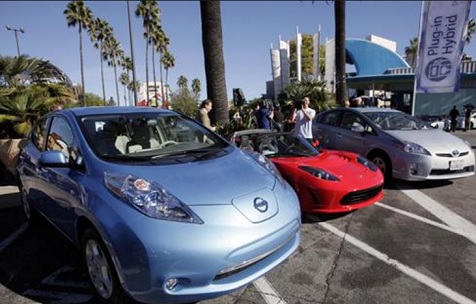 California stays with it: The California Air Resources Board has approved the
California stays with it: The California Air Resources Board has approved the  The Trump administration is keeping the president’s campaign promises supporting fossil fuels and pushing back on clean energy and efficient, clean transport. The State Department’s approval of the Keystone XL pipeline last week raised hackles further for many. Low-to-moderate gasoline and diesel prices aren’t helping make the business case for clean fuel and technologies, either.
The Trump administration is keeping the president’s campaign promises supporting fossil fuels and pushing back on clean energy and efficient, clean transport. The State Department’s approval of the Keystone XL pipeline last week raised hackles further for many. Low-to-moderate gasoline and diesel prices aren’t helping make the business case for clean fuel and technologies, either.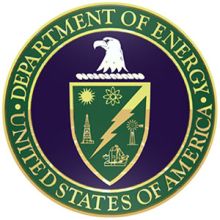 Federal funds cut: If the
Federal funds cut: If the  Fuel economy policy: President Donald Trump is expected to announce
Fuel economy policy: President Donald Trump is expected to announce  Battle over biofuels: Conflict and confusion
Battle over biofuels: Conflict and confusion 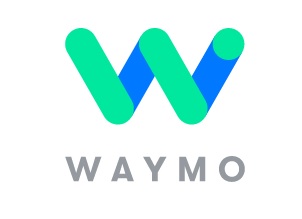 Waymo sues Uber: Waymo has filed a federal lawsuit claiming Uber and its self-driving truck company stole Waymo’s self-driving car technology.
Waymo sues Uber: Waymo has filed a federal lawsuit claiming Uber and its self-driving truck company stole Waymo’s self-driving car technology.  GM bringing out 1,000s of automated Bolts:
GM bringing out 1,000s of automated Bolts:  If you were to study the U.S. Energy Information Administration’s chart on transportation sources/fuels used during 2015, it could end up being depressing – unless you’re set up to do well investing in petroleum. If jet fuels were removed from the chart, the share of gasoline and diesel would increase and dominate the pie chart even more; the other categories would increase, too. Biofuels and natural gas lead the way in alternative fuels, while electricity and propane autogas are lumped together in the “other” category, along with a few other types. If you were to look at what’s fueling electric power plants, renewable energy is in a similar situation compared to fossil fuels; though it has gotten better.
If you were to study the U.S. Energy Information Administration’s chart on transportation sources/fuels used during 2015, it could end up being depressing – unless you’re set up to do well investing in petroleum. If jet fuels were removed from the chart, the share of gasoline and diesel would increase and dominate the pie chart even more; the other categories would increase, too. Biofuels and natural gas lead the way in alternative fuels, while electricity and propane autogas are lumped together in the “other” category, along with a few other types. If you were to look at what’s fueling electric power plants, renewable energy is in a similar situation compared to fossil fuels; though it has gotten better. two years, with incentives and a wide variety of PEVs available, driving growth in China. The U.S. and Europe are also seeing impressive gains. If this trend continues over the next 15 years, PEVs will make a decent share of global new vehicle sales, well beyond the current level of about 1% of global sales.
two years, with incentives and a wide variety of PEVs available, driving growth in China. The U.S. and Europe are also seeing impressive gains. If this trend continues over the next 15 years, PEVs will make a decent share of global new vehicle sales, well beyond the current level of about 1% of global sales. members. The industry is seeing significant advancements where technologies are being deployed in the latest generation of natural gas engines and fueling infrastructure. These are dramatically lowering emissions, providing North American fleets with the ‘greenest’ choice, said NGVAmerica President Matthew Godlewski.
members. The industry is seeing significant advancements where technologies are being deployed in the latest generation of natural gas engines and fueling infrastructure. These are dramatically lowering emissions, providing North American fleets with the ‘greenest’ choice, said NGVAmerica President Matthew Godlewski.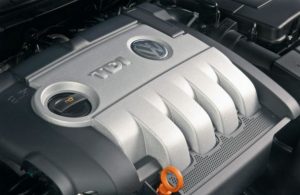 VW settlements and indictments: Volkswagen continued to settle criminal and civil charges with U.S. federal agencies, while six VW executives were indicted by the Department of Justice tied to the German automaker’s diesel emissions scandal. One executive was arrested at a Miami airport while trying to leave for Germany, while five of the six were thought to be residing in that country. Additional VW executives are being investigated and may face charges, Attorney General Loretta Lynch said. In its settlements, VW agreed to pay a $2.8 billion criminal fine to the federal government, and will operate under the oversight of a court-appointed independent monitor for three years. The company will additionally pay $1.45 to settle civil claims filed by the Customs and Border Protection agency over violations of U.S. customs and environmental laws. The automaker will also pay the DOJ $50 million for additional claims falling under the Financial Institutions Reform, Recovery and Enforcement Act (FIRREA). VW is also waiting to see the outcomes and costs coming from investigations by state attorneys general; and from lawsuits brought by shareholders who accuse Volkswagen of waiting too long to disclose the financial risk of its emissions cheating.
VW settlements and indictments: Volkswagen continued to settle criminal and civil charges with U.S. federal agencies, while six VW executives were indicted by the Department of Justice tied to the German automaker’s diesel emissions scandal. One executive was arrested at a Miami airport while trying to leave for Germany, while five of the six were thought to be residing in that country. Additional VW executives are being investigated and may face charges, Attorney General Loretta Lynch said. In its settlements, VW agreed to pay a $2.8 billion criminal fine to the federal government, and will operate under the oversight of a court-appointed independent monitor for three years. The company will additionally pay $1.45 to settle civil claims filed by the Customs and Border Protection agency over violations of U.S. customs and environmental laws. The automaker will also pay the DOJ $50 million for additional claims falling under the Financial Institutions Reform, Recovery and Enforcement Act (FIRREA). VW is also waiting to see the outcomes and costs coming from investigations by state attorneys general; and from lawsuits brought by shareholders who accuse Volkswagen of waiting too long to disclose the financial risk of its emissions cheating.